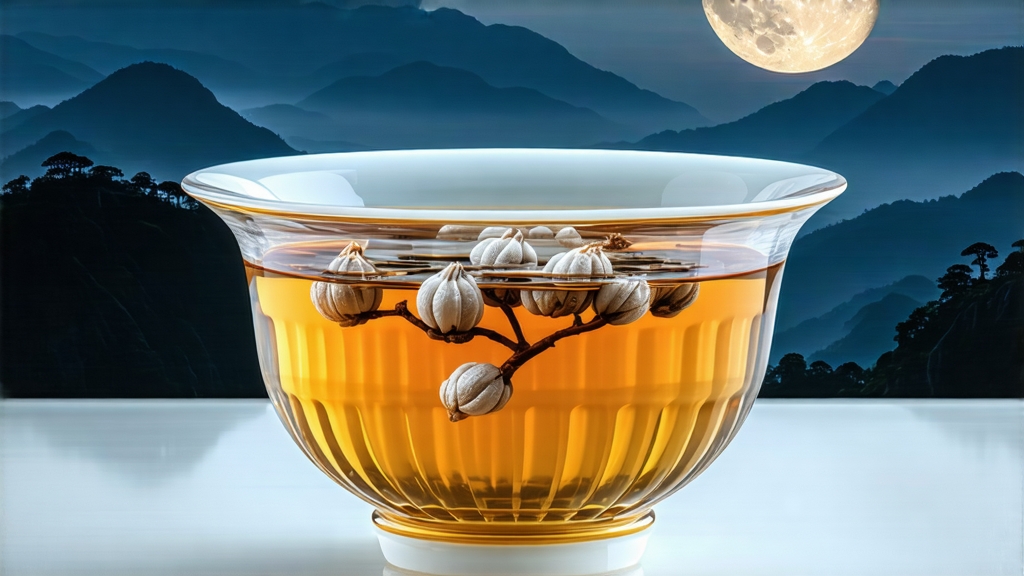
Tucked high on the forested ridges of southern Yunnan, where the Mekong carves silver ribbons through subtropical cloud forest, a tea is made only when the moon hangs fullest. Locals call it Yue Guang Bai—literally “Moonlight White”—a name that sounds romantic yet faithfully describes the nightly choreography that shapes every leaf. To most Western drinkers white tea means the down-covered Silver Needle of Fujian, but Yunnan’s moonlit version offers a different grammar of flavour: warmer, duskier, laced with honeyed plantain and the cool scent of mountain orchids. Understanding it means stepping outside theorthodox map of Chinese tea and into a frontier where Dai, Hani and Lahu farmers read lunar calendars before reaching for their plucking shears.
History: from borderland curiosity to boutique star
White tea as a formal category was codified in Fujian during the late Qing dynasty, yet Yunnan’s ethnic groups have air-dried tea for centuries, storing brittle leaves in bamboo tubes for barter along the Tea Horse Road. The modern narrative of Yue Guang Bai begins in 2003, when a small Jingmai factory tried “Fujian technique” on local Da Ye (big-leaf) cultivars. Instead of sun-withering under the fierce Yunnan sun—risking over-oxidation—they experimented with shaded night trays, discovering that cool moonlight and gentle mountain breezes preserved bright tips while encouraging a slow enzymatic browning along the leaf’s edge. The resulting two-tone leaf—downy white on the face, charcoal grey on the back—resembled a moonlit landscape and caught the eye of Kunming tea artists. Within five years Moonlight White had migrated from village courtyards to Shanghai catwalks, rebranded as “the white that drinks like a red” because its amber liquor carries the body of light Yunnan black tea while legally still qualifying as white tea under China’s 2008 national standard (GB/T 22291).
Cultivar & terroir: why Yunnan smells different
Yunnan’s indigenous Da Ye cultivars possess huge leaves, thick cuticles and an unusually high ratio of polyhydroxy catechins to amino acids. Translated into taste, this means broader shoulders for honeyed sweetness and enough tannic spine to age gracefully. The core micro-region is Jingmai Mountain (1,200–1,600 m), whose ancient camphor and ficus groves emit a constant resinous mist. Studies by the Yunnan Academy of Agricultural Sciences show that leaves grown under this mixed canopy contain 1.8 times the ionone derivatives responsible for orchid aroma compared with terrace-grown equivalents. Night temperatures drop 8–10 °C, tightening leaf cell walls and slowing water loss; the moonlight itself is too weak to photosynthesise but sufficient to maintain mild enzymatic activity, creating a partial oxidation corridor impossible to replicate in factory tunnels.
Craft: the quiet choreography after sunset
Plucking begins at twilight when the sun no longer penetrates the canopy. Pickers take only one bud plus the immediate two leaves, laying them in shallow bamboo baskets lined with banana leaf to prevent compression bruises. Before moonrise the trays are carried to open-air pavilions where altitude wind circulates. From 20:00 to 06:00 the leaves rest in total darkness except for starlight and moonlight; no fans, no artificial heat. Around dawn, when relative humidity peaks, the leaf edges have curled inward like tiny scrolls and moisture has fallen to 55 %. At this critical node the tea master briefly suns the leaves for twenty minutes—just long enough to fix the “moon-kissed” aroma compounds—then returns them to shade for another twenty-four hours. No rolling, no pan-firing; only a final low-temperature bake (40 °C) for forty minutes reduces moisture to 8 %. The finished maocha is remarkable: silvery trichomes intact, but the lamina underside carries a charcoal sheen reminiscent of lightly toasted nori.
Grades & style variations
Moonlight White is unofficially graded by bud ratio and leaf size.
- Silver Moonlight (90 % buds): the most prized, tasting of lychee water and white peach.
- Amber Moonlight (50 % buds, 50 % leaf): deeper colour, notes of honeycomb and dried apricot.
- Rustic Moonlight (30 %